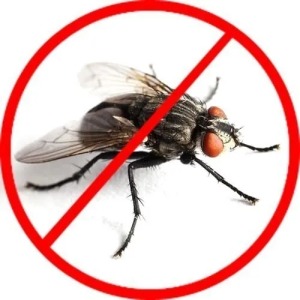Fly Control Management
Usually seen in the Lobby Entrance, receiving area, open areas,kitchen facing the open areas etc. This service is for the Management of pests such as Houseflies, flesh flies, and gnats. Houseflies may spread diseases such as typhoid fever, tuberculosis, anthrax, leprosy, diarrhea and dysentery. Certain larvae of blowflies, bottle flies, and flesh flies may feed on dead as well as living tissue of mammals,causing blood poisoning,contamination. The treatment has to be decided as per the surrounding conditions of each location.
This treatment is for the Management of pests such as Houseflies. Houseflies may spread diseases such as conjunctivitis, poliomyelitis, typhoid, fever, tuberculosis, anthrax, leprosy, cholera, diarrhea and dysentery. The treatment has to be decided as per the surrounding conditions of each location.
The treatment will be based on preventive control, which is aimed at controlling fly breeding points within your compound area. No pesticide, space sprays; residual sprays will be used on or near the product inside the production / packing / storage areas in case of sensitive industries. The common areas, wall & floor junctions, areas having decaying matter stored within the premises, areas favoring fly breeding will be sprayed. A band of 2 feet on the wall & floor from the wall & floor junction on the external periphery of the structure will be sprayed using a suitable chemical. Insect Light Traps/Fly catching, killing machines should be installed by customer inside the premises depending upon requirement and the type of client. Care needs to be taken while installing these devices. Not to be installed on top of any production / packing machinery, but away from it and near the possibly entry points. Air curtains should be installed by the client on the entry doors from the compound to the facility and also the doors leading to sensitive areas such as raw material storage, finished goods, production. Space sprays; residual water base insecticide treatment will be applied outdoors. All breeding places, external periphery and sewers/drains will be covered. In cases of heavy infestations in large refuse / ETP / garbage / waste disposal areas, use of Bio Control Agent, Spalangia so. A parasitic wasp, which attacks pupae of flies, is recommended.
(a) Water based chemical will be applied as controlled spray and space spray with the help of 5 – lt. capacity hand compression sprayer.
Flies breed in organic decaying waste matter. The infestation of flies depends upon the surrounding conditions, the sanitation and hygienic conditions defer from place to place. Daily.
As required will be maintained with details of the chemicals used and areas with date & time of treatment and client signature etc. Inspection card/Progress report (IC/PC) will be generally used in most of the cases. However specially designed log sheets will also be used in some cases depending on the type of client.
Total reliance on insecticide applications in and around the units, often results in failure to produce long term control results. Constant effort must be made to eliminate and dry out potential fly breeding sites. At times, insecticides may be helpful in reducing heavy nuisance fly populations. Priority should be accorded to inspect periodically and recommend habitat alterations.
The treatment is based on preventive control, which is aimed at controlling fly breeding points within your compound area.
a. Residual spraying treatment
b. Baiting treatment. (Flyco Bait )
c. Identifying the source of entry and treating the harborage areas.
d. Suggestion on Non chemical fly controls (Fly Trapping Machines, Fly Strips) and Improving sanitation levels to prevent harborages.
(A) Remove or limit what is attracting the flies.
(B) Remove or treat breeding sites.
(C) Stop them entering by physical barriers.
(D) Use residual surface treatments where entry cannot be prevented.
(D) Use aerosol insecticide as a quick knockdown but stay out of the sprayed area for as long as possible after use.
